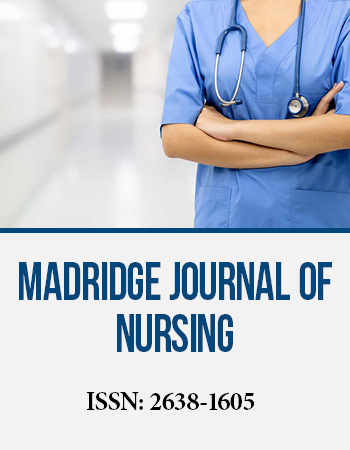2nd International Nursing Conference
November 1-3, 2017 Barcelona, Spain
Quality of Chest Compressions and Compliance by Healthcare Professionals with Real-Time Audiovisual Feedback during in-Hospital Cardiopulmonary Resuscitation
1,2,3Department of Health and Caring Sciences, Linneaus University, Sweden
4,5,6Department of Internal Medicine, Division of Cardiology, Kalmar County Hospital, Sweden
Introduction: A high quality of chest compressions, e.g. sufficient depth (5-6cm) andrate (100-120 per minute), has been associated with survival. The patientʼs underlay affects chest compression depth. Depth and rate can be assessed by feedback systems to guide rescuers during cardiopulmonary resuscitation (CPR).
Aim: To describe the quality of chest compressions by healthcare professionals using real-time audiovisual feedback during inhospital CPR.
Method: An observational descriptive study was performed including 63 cardiac arrest events with a resuscitation attempt. Data files were recorded by Zoll AED Pro, and reviewed by RescueNet Code Review software. The events were analyzed according to depth, rate, quality of chest compressions and underlay.
Results: Across events, 12.7% (median) of the compressions had a depth of 5-6 cm. Compression depth of > 6 cm was measured in 70.1% (median). The underlay could be identified from the electronic patient records in 54 events. The median compression depth was 4.5 cm (floor) and 6.7 cm (mattress). Across events, 57.5% (median) of the compressions were performed with a median frequency of 100-120 compressions per minute and the most common problem was a compression rate of < 100 (median = 22.3%).
Conclusions: Chest compression quality was poor according to the feedback system.
However, the distribution of compression depth with regard to underlay points towards overestimation of depth when treating patients on a mattress. The audiovisual feedback devices ought to be further developed. Healthcare professionals need to be aware of the strengths and weaknesses of their devices.
Biography:
Kristina Schildmeijer, RN, PhD and senior lecturer at the Institution of Health and Caring Sciences, Linnaeus University in Kalmar, Sweden. She has many years of experience working both as a Registered Nurse and as Head of Division. She defended her dissertation in 2013 and the name of the thesis was Retrospective record Review- A Matter of Patient Safety. She is a part of several research teams and is also participating in a national collaboration by the Swedish Association of Local Authorities and Regionsfor the development of a manual for the identification of Adverse Events in Swedish home care settings. At the Linnaeus University Kristina Schildmeijer is working asa senior lecturer and is teaching subjects as Patient Safety, Caring Leadership, Lifestyle- and Health subjects and System Theory.


